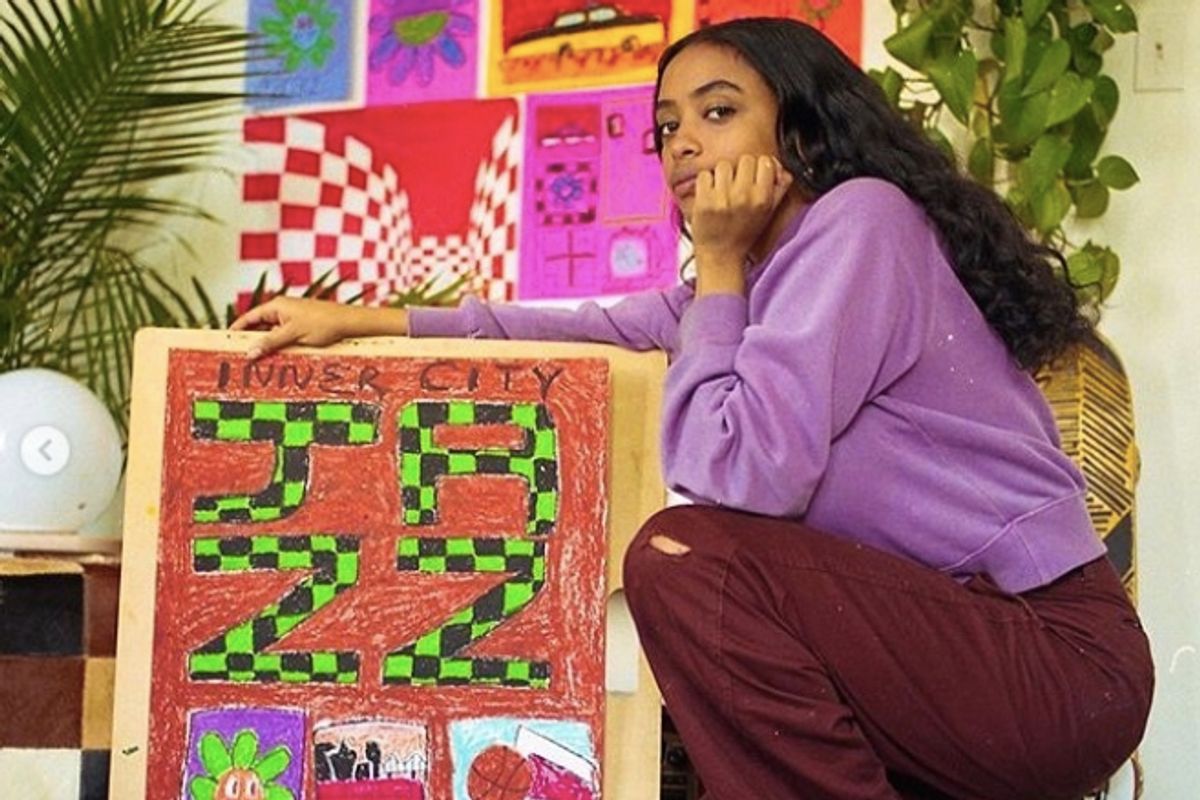In times of strife, it's the power of voices—in protest and in song—and visual creation that band us together and empower us to grow. Throughout history's many political movements, artists have played an integral role in capturing the moment, inspiring emotions, and shifting the narrative to achieve progress in ways that traditional political methods rarely do.
In the Bay Area in 2020, nowhere is this more true than in Oakland, where the diverse community of artists—especially BIPOC artists—rose up with their brushes and spray cans to creatively protest the unjust killing of George Floyd this past summer. Their anger and hope and solidarity all spilled out onto the streets in the form of art, once again confirming The Town's reputation as a vital and vibrant center for innovation and change.
Oakland's Pt. 2 Gallery, founded by Brock Brake and Dan Pan, has consistently placed Black culture, community, and issues of social justice on the forefront with its rotation of contemporary visual arts programming and a diverse representation of artists.
Brake, who grew up in Marysville, Ohio, found his escape from agriculture and factories in skate culture. He studied photography in Chicago where he mingled with graffiti artists (who would later earn recognition off the street and in bona fide galleries) and he began following the goings-on at galleries like Fecal Face in San Francisco. In 2018, he became the director and curator of Pt. 2, where he has turned the band of misfits and minority kids of his youth into an organized curation of diverse artists with a strong emphasis on identity.
"Brock has always been building community and bringing people together—graffiti artists, painters, sculptors, deejays, skaters—everyone basically, which disrupts art world hierarchies. This is something white folks really need to be doing right now," says artist Angela Hennessy, whose work is represented by the gallery. "For me, as a Black artist who makes work about identity, I needed to know that I could trust him with my work. I felt a connection right away. That isn't always the case with gallery folks. Even those with the best intentions often end up making more work for Black/POC artists."
Pt. 2 is a leading champion of BIPOC talent in the Oakland art world, alongside the likes of Oakland Museum of California (OMCA), where curator Erendina Delgadillo's ongoing Black Power exhibit seeks to reveal the history of California's Black Power movements through art and artifacts. She views her work as a way to spark conversations and "contextualize our moments on this planet...to illuminate why and how these intersecting systems of oppression like homophobia, racism, sexism, classism, capitalism, etc. affect the individual." Her goal is to enlighten audiences in ways that are sometimes unexpected, whether through a painting, a poem, or song.
"Art can give us a moment to rest, regroup, and rediscover why we're involved in a struggle," she says.
Here are six BIPOC artists, all based in Oakland, who are using their creativity and platforms to push for political and social change.
Angela Hennessy: Black hair sculptures explore race, mortality, gender, and sexuality.
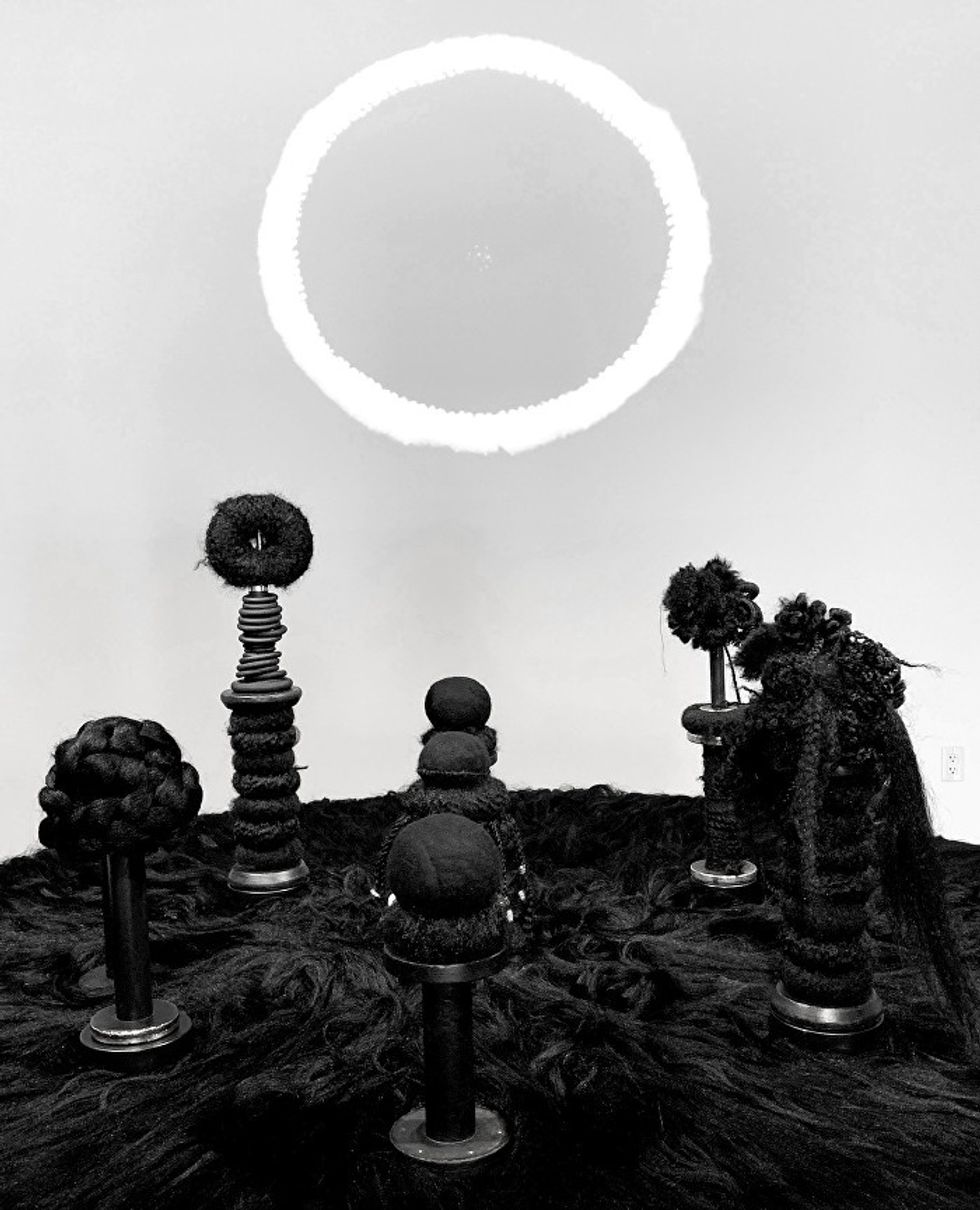
(Courtesy of Angela Hennessy)
As she delves into constructs of race, mortality, gender, and sexuality, Oakland-based artist Angela Hennessy works with an unexpected medium: hair. Real hair. Black hair. And her reasons run deep.
"In many cultures, hair has long served as a material exchanged between the living and the dead. As a symbol of one's identity, hair is a potent tactile reminder of the separation caused by death," she says. "Mourning rituals with hair often center around the idea of exchange or offering; shaving or cutting off one's hair as a sign of grief for the dead or the collecting of a lock from the dead to be kept by the living in memoriam."
Prior to 2016, Hennessy worked with various materials to simulate hair, including thread, velvet, and wire. But when she was invited to show her work in an exhibition entitled Black Earth, she says the show was "a significant turning point in which I embraced the politics of Black hair more directly."
The artist now purchases hair from a shop in her West Oakland neighborhood, combining it always with some hair of her own for sculptures that "examine mythologies of Blackness embedded in linguistic metaphors of color and cloth."
"I treat the hair in my sculptures very much like the hair on a head: washing, combing, brushing, conditioning, braiding, shaping, etc.," she explains. "Everything I do becomes a ritual of everyday gestures."
Hennessy also teaches classes on the visual and cultural narratives surrounding death and contemporary art as an associate professor at California College of the Arts. In 2015, while interrupting a violent assault on the street in front of her house, she survived a gunshot wound. In the months following, she wrote "The School of the Dead," a manifesto blending poetry, prayer, and call to action. Currently, it is being developed as an educational program for aesthetic and social practices that mediates the boundary between the living and the dead.
// Angela Hennessy's work is available for purchase through Pt.2 Gallery, 1523b Webster St. (Oakland), part2gallery.com.
Muzae Sesay: Spotty memories recreated as vibrant works of art.
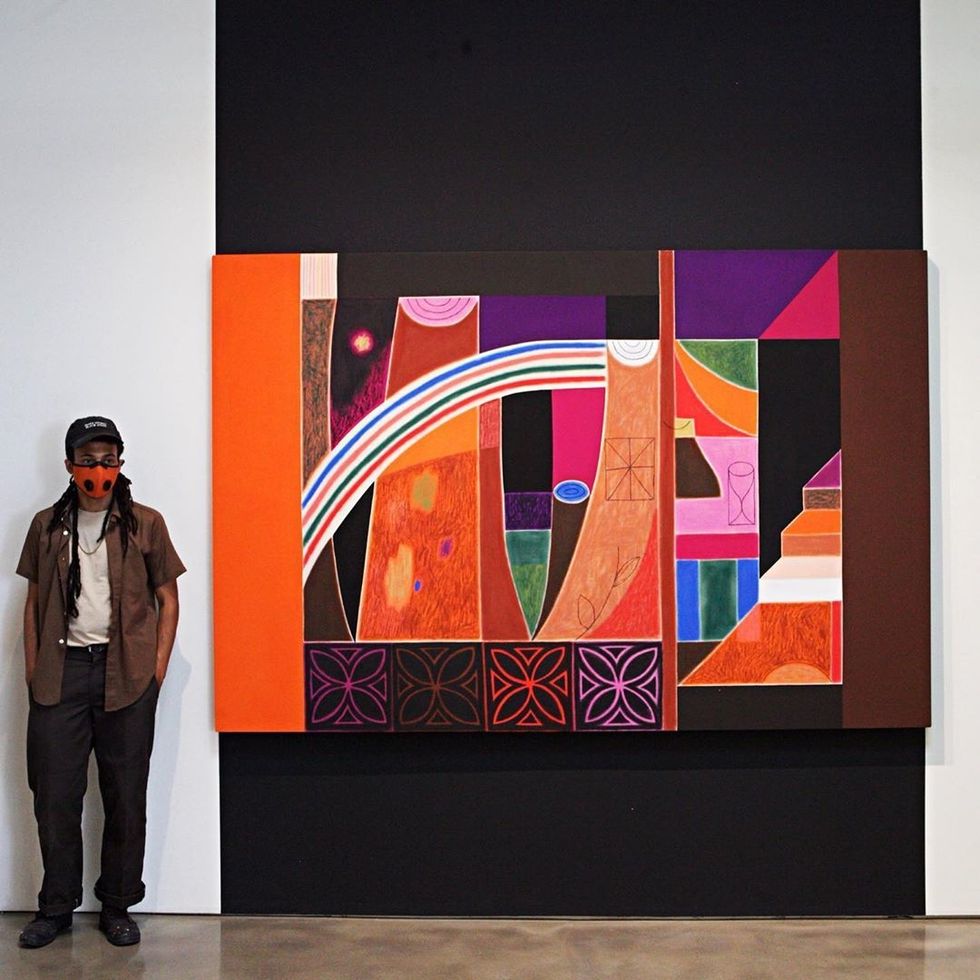
(Courtesy of @muzae)
A one-time sociology major at San Francisco State, Muzae Sesay has no formal art training, but his practiced hand makes him one of Oakland's most exciting artists today. If his work looks familiar, you may have seen it in local galleries or splashed on the basketball court at Oakland's Rainbow Recreation Center—the mural was part of Dan Peterson's "Project Backboard"—as well as featured in Juxtapoz.
Sesay paints vibrant interiors and urban landscapes that navigate through worlds and memories. He's described himself as having a spotty memory, often merging two events into one, and his work evokes this, lacing together multiple dimensions and points of view. The pieces often focus more on the emotional takeaway of an experience rather than on an accurate depiction of a moment or place.
He also creates works around places he's never been, developing a "memory" from stories he's been told. His Lumley Beach series, for example, centers on his father's home country of Sierra Leone. Home, and the social interactions that take place within it, is another focal point. Currently, he has an exhibit on view at Pt. 2 called "Freetown Veranda." You can also see his work as part of SFMOMA's new Bay Area Walls mural installation.
// Muzae Sesay'swork is available for purchase through Pt.2 Gallery, 1523b Webster St. (Oakland),part2gallery.com; muzaesesay.com.
Rewina Beshue: Geometric, peppy works reflect daydreams and self-expression.
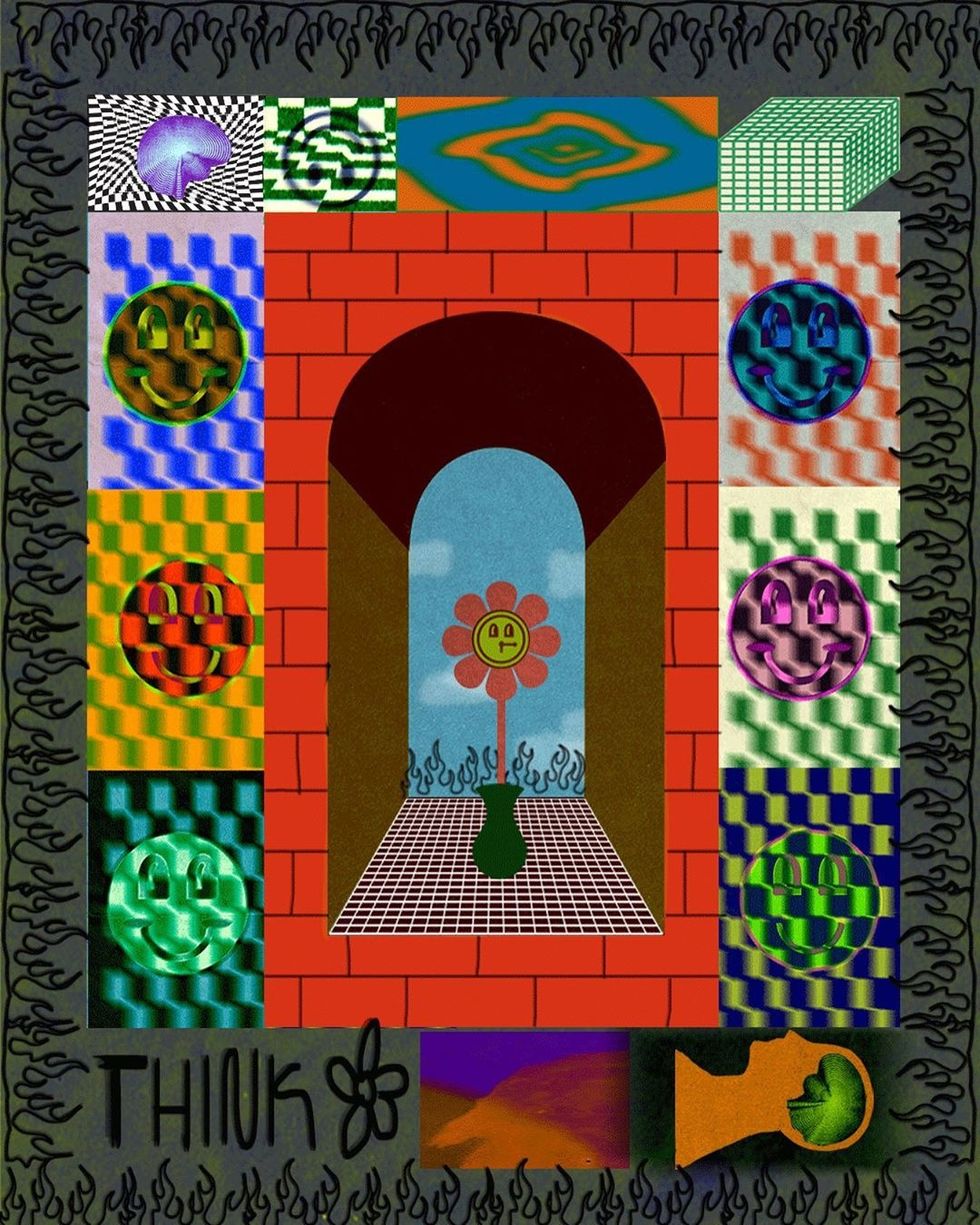
(Courtesy of @rgb__)
For Rewina Beshue, individuality is key. While she's said that she sometimes felt self-conscious growing up, that fear of being herself dissipated with age and now plays a major role in her art. Through her style and work, she strives to inspire people to feel comfortable in their own skin.
The San Francisco State grad studied graphic design and visual communications, but she's really been creating since grade school where she struggled with dyslexia and poor memory. Those themes show up in Beshue's surreal illustrations, animations, and doodles, while also reflecting what she wants to see in her dreams (she never remembers them). The result is psychedelic and chromatic schemes with checkered elements, happy faces, and geometric shapes that tend to be a reflection of her daydreams.
While art—and Instagram—began as a form of self-expression, her following grew when she was street-cast by big brands including Levi's and Adidas. Her work hit the art scene and she received some recognization after doing shows in the Bay Area, New York, Los Angeles, and Taiwan.
Beshue also takes on cause-driven partnerships. For a recent collaboration with Flatspot, two throw blanket designs are being donated to Oakland Workers Food Fund. Now, she's teamed up with Baggu on a limited edition tote bag to inspire the Black community to get out and vote. Proceeds will benefit the Black Voters Matter Fund.
// Follow along at instagram.com/rgb_.
Lenworth “Joonbug” McIntosh: Comic illustrations that mirror internal dialogue.
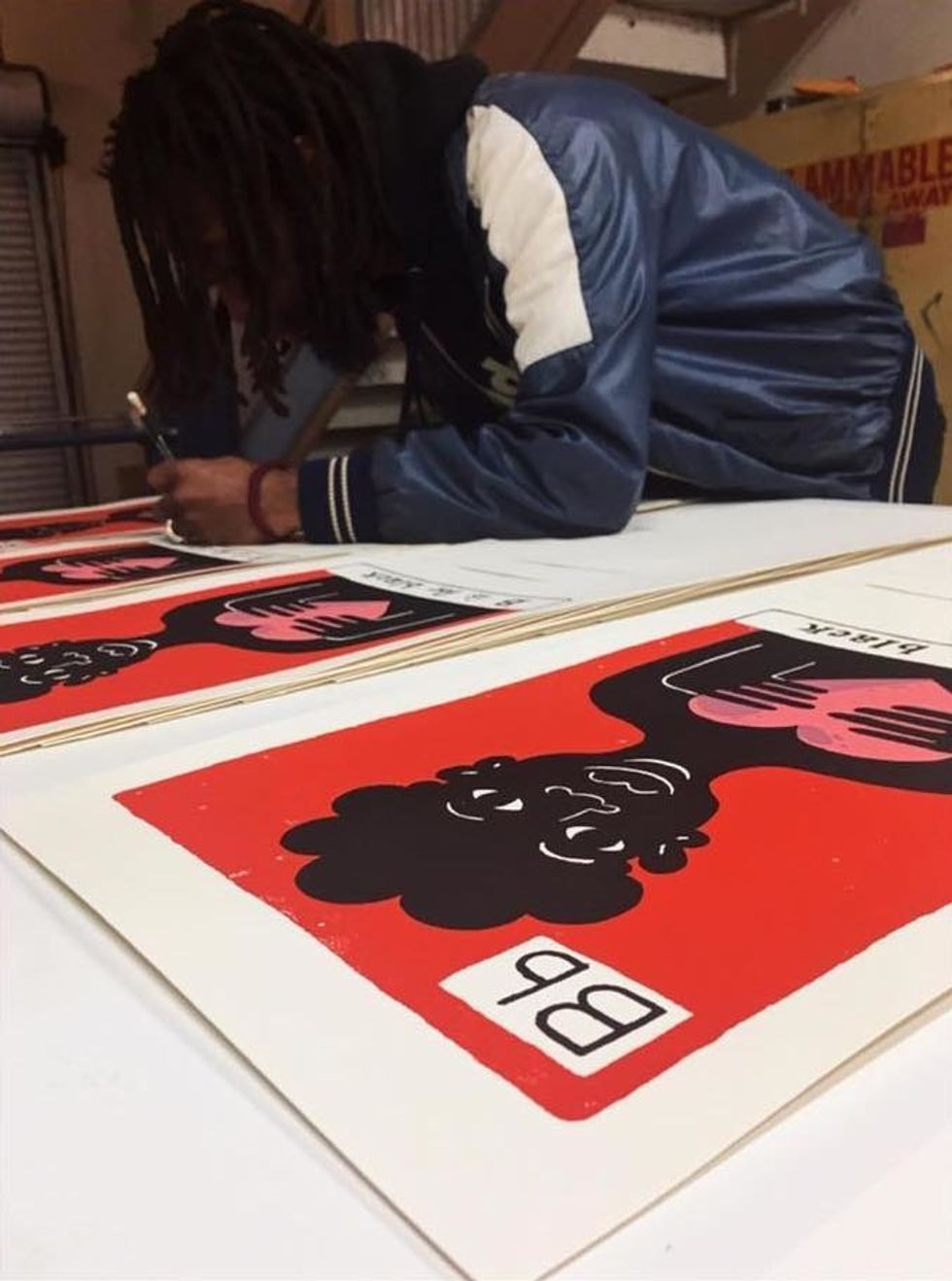
(Courtesy of @thebugs87)
Lenworth "Joonbug" McIntosh is a visual artist, photographer, illustrator, and designer based in Oakland—by way of Texas and Jamaica. His work mirrors his own internal dialogue rendered in a wide array of mediums: illustrations and lettering, murals, events, social media, products, and branding. Comic elements with whimsical characters can be found throughout.
Through his paintings and installations, McIntosh explores themes such as the subjective nature of perception; the duality of simultaneously being right and wrong; and what we accept based on our experiences. He received his MFA in Fashion Merchandise from the Academy of Art University in San Francisco, and has exhibited throughout the western United States.
// Lenworth "Joonbug" McIntosh's art is available at bugs87.com/shop and at Pt.2 Gallery, 1523b Webster St. (Oakland),part2gallery.com.
Taylor Smalls: Layers of paint capture the complexity of women and skin color.

(Courtesy of @taylor.smalls)
Taylor Smalls may hail from Albuquerque, New Mexico, but she fits right in in her adopted home of Oakland, where the Black artist community is burgeoning. Both a designer and contemporary palette knife painter, Smalls' painting practice centers around large-scale female portraiture that employs layers of thick paint and sheer washes to reflect the multifaceted nature of woman of color while still leaving the skin intentionally indiscernible of race.
For Smalls, it is important to celebrate the complexities and power of womxn ("in the contemporary art world, depictions of womxn reveling in their strength is severely lacking") as well as of the BIPOC community.
"I've been taking stock of the difficulty for many painters to represent the skin color of Black and brown people in a true and convincing way," she says. "More often than not, brown skin is depicted in a flat dull tone, lacking the layered variation that actually comprises it. So I ran in the opposite direction. Through incredibly saturated pigments and physical texture, I highlight and celebrate the depth and complexity of women of color through the rendering of their skin."
Smalls' work has been shown in a range of locales including 111 Minna, Glass Rice, Mr. Tipple's Recording Studio, the DeYoung Museum, and local cafes and bars including Southern Pacific Brewery.
// Art is available at taylorsmalls.com.
Christopher Martin: Tattoo-style images satirize slavery and white supremacy.
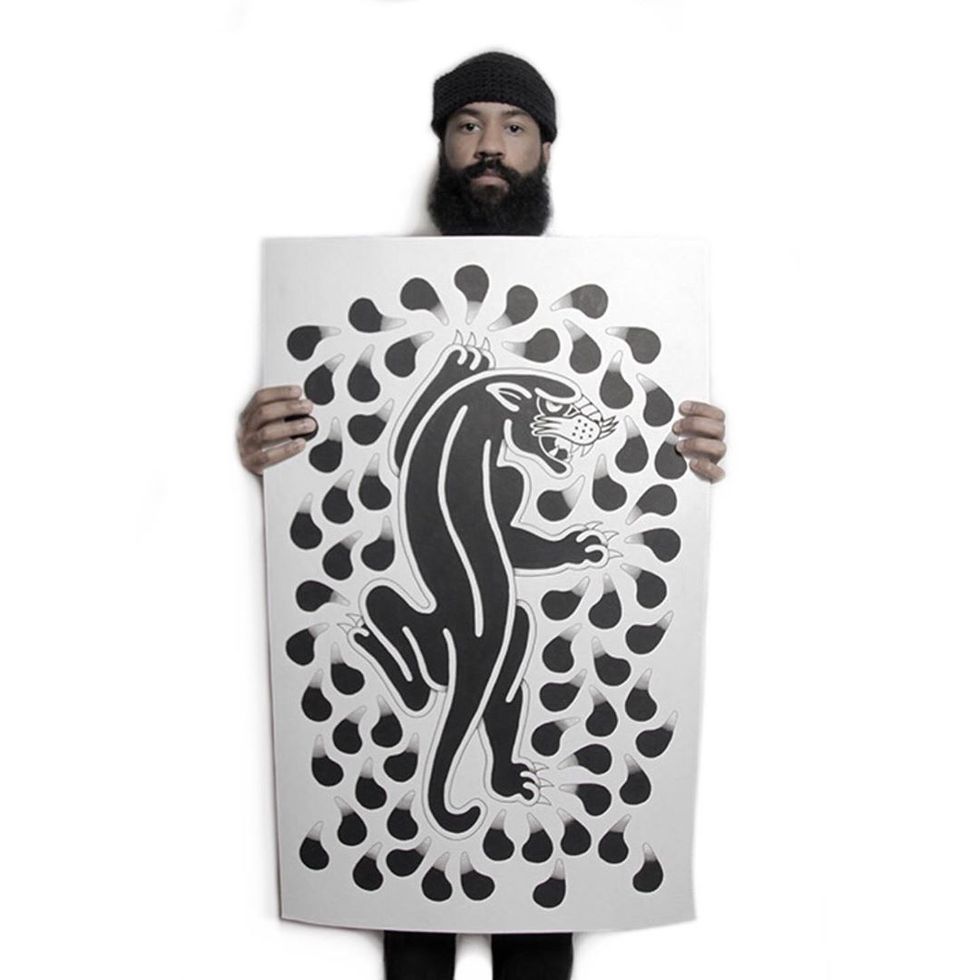
(Courtesy of @chrispymartin)
North Carolina–born graphic designer, multimedia artist, and tattoo artist Christopher Martin emblazons hand-cut and -sewn cotton banners (cotton to represent the toil of American slaves) with logo-like designs and traditional tattoo flash images—common designs you'd typically see on the walls or in binders of tattoo shops—to interrogate and satirize white supremacy, segregation, and slavery. His pieces strive to represent the modern-day experience of the African diaspora.
The Oakland-based creator also co-founded an apparel brand, Cypher, with his mom.
// Martin'swork is available for purchase through Pt.2 Gallery, 1523b Webster St. (Oakland),part2gallery.com; christophermartin.info.



